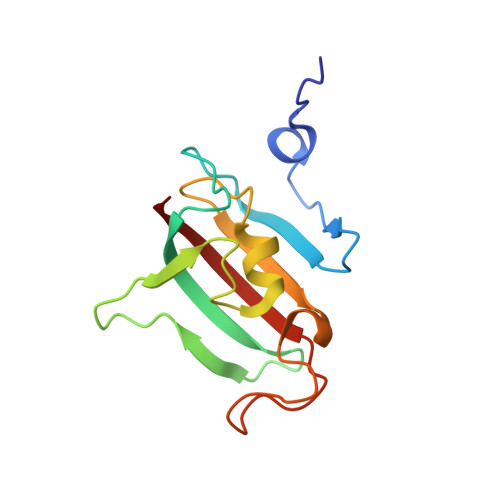Structure and Dynamics of Macrophage Infectivity Potentiator Proteins from Pathogenic Bacteria and Protozoans Bound to Fluorinated Pipecolic Acid Inhibitors.
Perez Carrillo, V.H., Whittaker, J.J., Wiedemann, C., Harder, J.M., Lohr, T., Jamithireddy, A.K., Dajka, M., Goretzki, B., Joseph, B., Guskov, A., Harmer, N.J., Holzgrabe, U., Hellmich, U.A.(2025) J Med Chem 68: 5926-5941
- PubMed: 39976355
- DOI: https://doi.org/10.1021/acs.jmedchem.5c00134
- Primary Citation of Related Structures:
8P3C, 8P3D, 8P42 - PubMed Abstract:
Macrophage infectivity potentiator (MIP) proteins, found in pro- and eukaryotic pathogens, influence microbial virulence, host cell infection, pathogen replication, and dissemination. MIPs share an FKBP (FK506 binding protein)-like prolyl- cis/trans -isomerase domain, making them attractive targets for inhibitor development. We determined high-resolution crystal structures of Burkholderia pseudomallei and Trypanosoma cruzi MIPs in complex with fluorinated pipecolic acid inhibitors. The inhibitor binding profiles in solution were compared across B. pseudomallei , T. cruzi , and Legionella pneumophila MIPs using 1 H, 15 N, and 19 F NMR spectroscopy. Demonstrating the versatility of fluorinated ligands for characterizing inhibitor complexes, 19 F NMR spectroscopy identified differences in ligand binding dynamics across MIPs. EPR spectroscopy and SAXS further revealed inhibitor-induced global structural changes in homodimeric L. pneumophila MIP. This study demonstrates the importance of integrating diverse methods to probe protein dynamics and provides a foundation for optimizing MIP-targeted inhibitors in this structurally conserved yet dynamically variable protein family.
- Faculty of Chemistry and Earth Sciences, Institute of Organic Chemistry and Macromolecular Chemistry, Friedrich Schiller University Jena, 07743 Jena, Germany.
Organizational Affiliation:



















